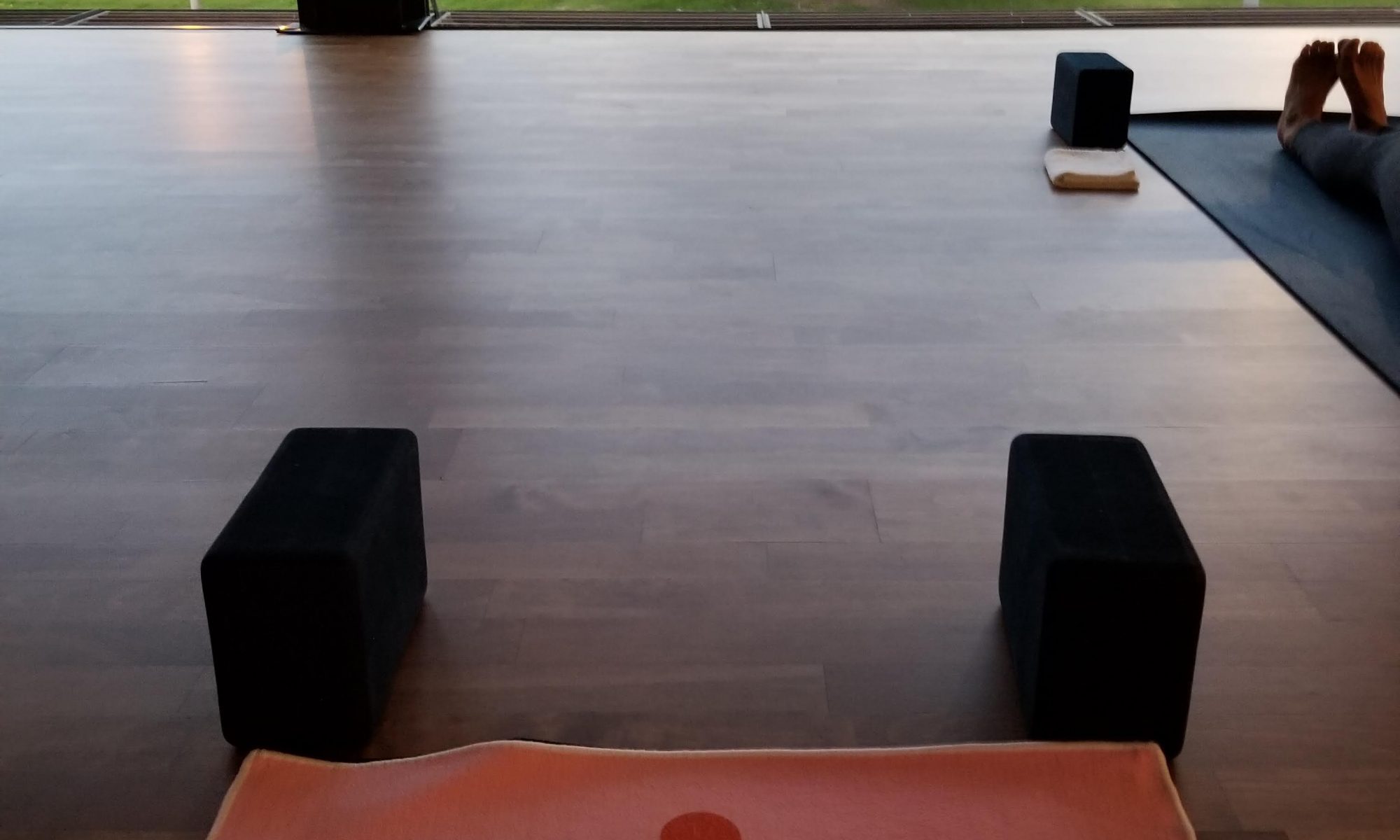As I get older, I gain more and more appreciation for restorative yoga.
When I was younger it felt like a waste of time. Why would I want to spend time relaxing in comfortable postures when I could be sweating? I usually found myself spending those last few moments of class in shavasana (corpse pose, the traditional last posture of yoga class) thinking about what I was going to eat after I left.
In my previous post about yoga, I mentioned that I am more interested in doing less strenuous yoga these days. I still like my regular yoga practice to include a good sweat and at least a few moments of “yikes!” But I also have an appreciation for the occasional restorative yoga class.
My neighbor around the corner goes to the same gym as I do and one day we were chatting about our various workouts and the different yoga classes that our gym offers. He mentioned that sometimes he likes to take this one restorative yoga class that uses lots of bolsters and blankets – it was like having nap time. I admitted that I have fallen asleep in restorative yoga classes before. One time I am pretty sure that I was snoring!
Usually restorative yoga classes will move through a few postures in a slow and gentle manner, then transition into an extended shavasana (or, as I seem to think of it, nap time). Substituting a quick nap for your workout is not the point though. The ultimate purpose of any style of yoga is to prepare you for meditation. Restorative yoga just chooses to go about this in a different way than more active, physically strenuous styles.
Props
A restorative yoga class will tend to make extensive use of props such as blocks, bolsters and straps. As someone who was once young, aggressive and extremely flexible in yoga class, I have only recently developed an appreciation for using these kinds of props. Using props in various postures as a sort-of bridge to connect your body and to the ground isn’t about making something “easier.” The connection enables the body to release tension and you can experience a posture more fully, if not more deeply.
Yin Yoga
One restorative yoga class that I would take from time to time was a yin yoga class. In yin yoga, you hold each posture for at least two minutes. Fortunately, the postures are not balances or inversions, but mostly seated and laying-down positions. It is a really interesting practice because you when you spend so much time in a posture, you really have the opportunity to look into all the dark corners that are easy to ignore when you aren’t holding the position for as long. I discovered things that I didn’t like about postures that had been my favorites like baddha konasana (aka bound angle pose, or butterfly stretch). Even holding child’s pose for two minutes can be intense.
When I don’t fall asleep in shavasana, I do still find my mind wandering. But another advantage to restorative yoga for me is that it doesn’t have to be done on an empty stomach, so I can often coax myself out of obsessing about food for at least a few minutes.
Wisdom, kindness, and love. Namaste.

